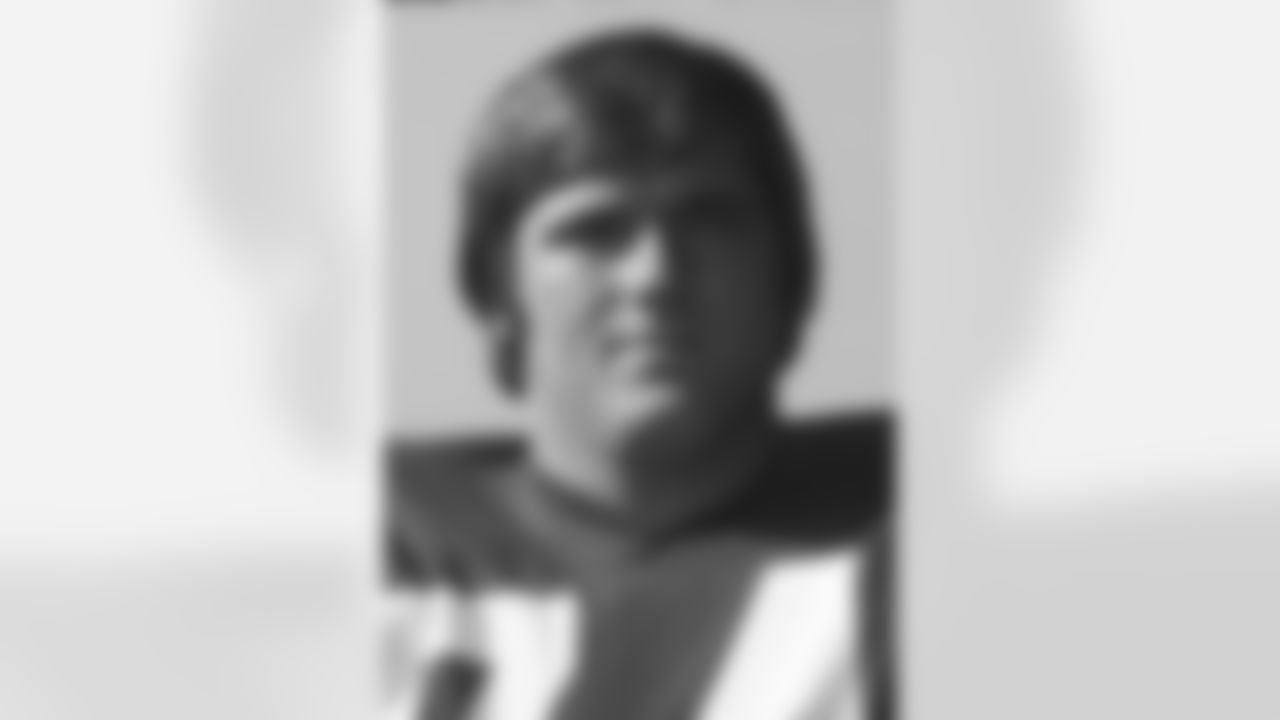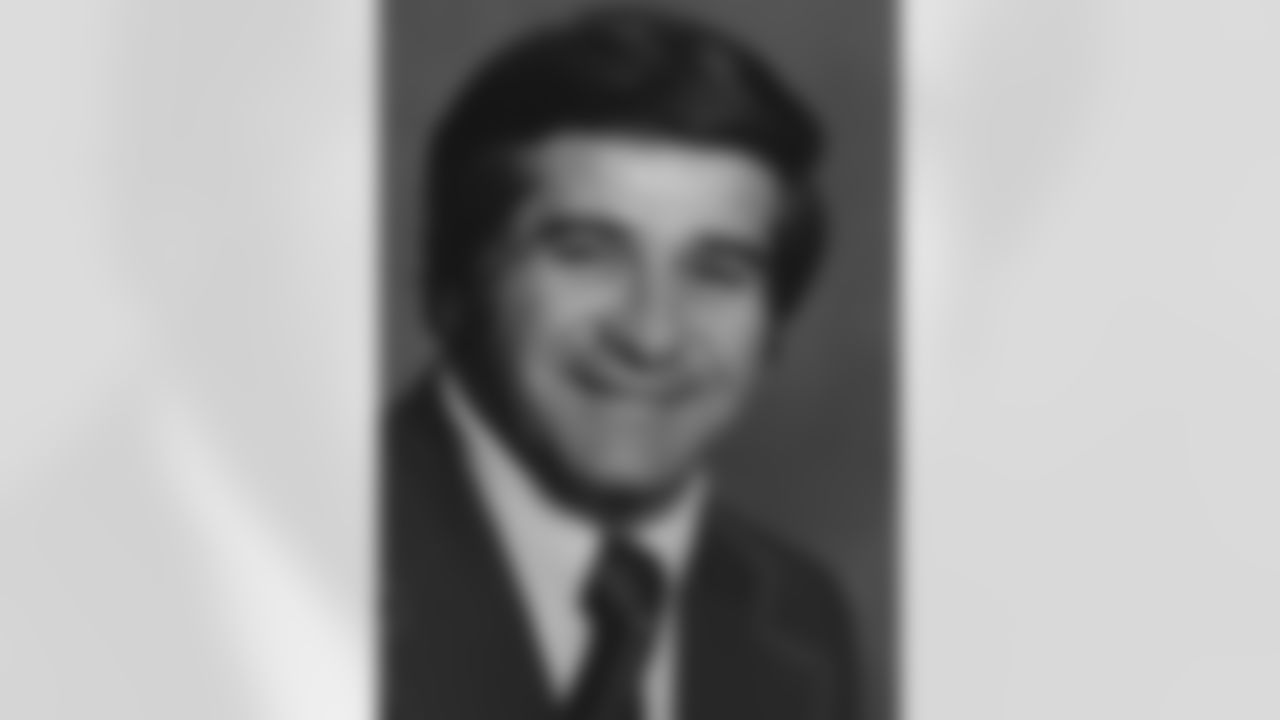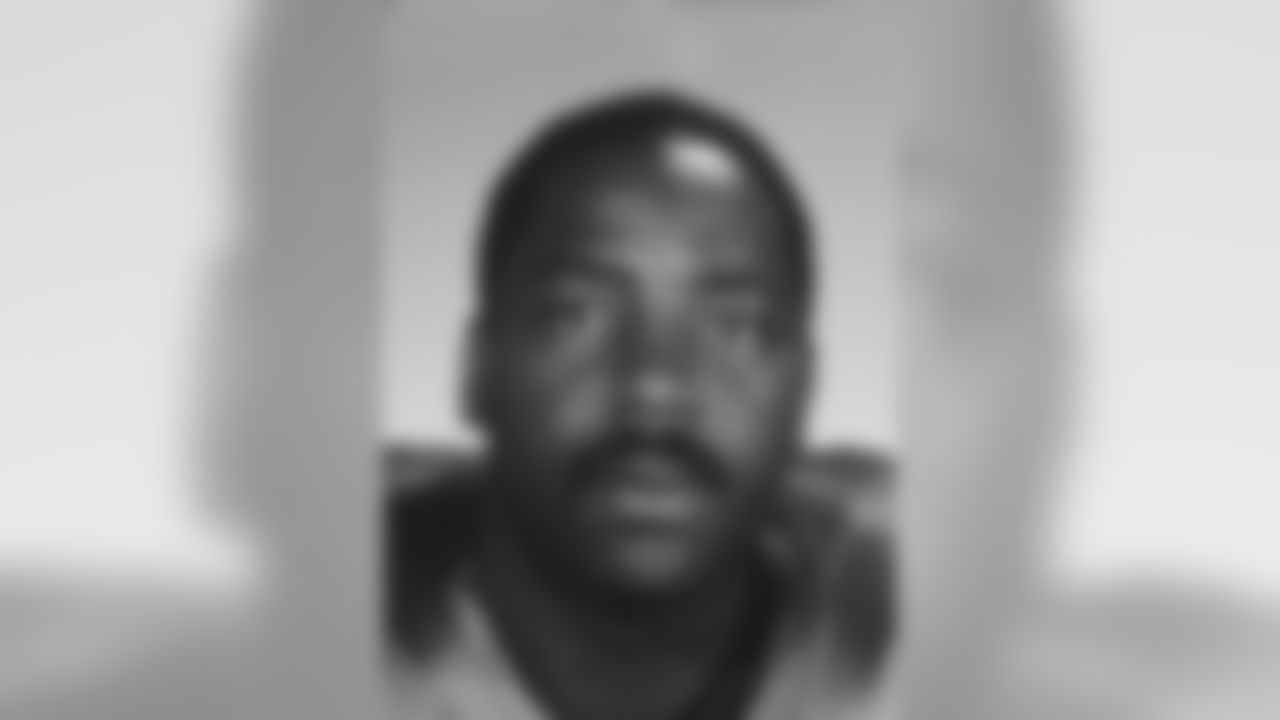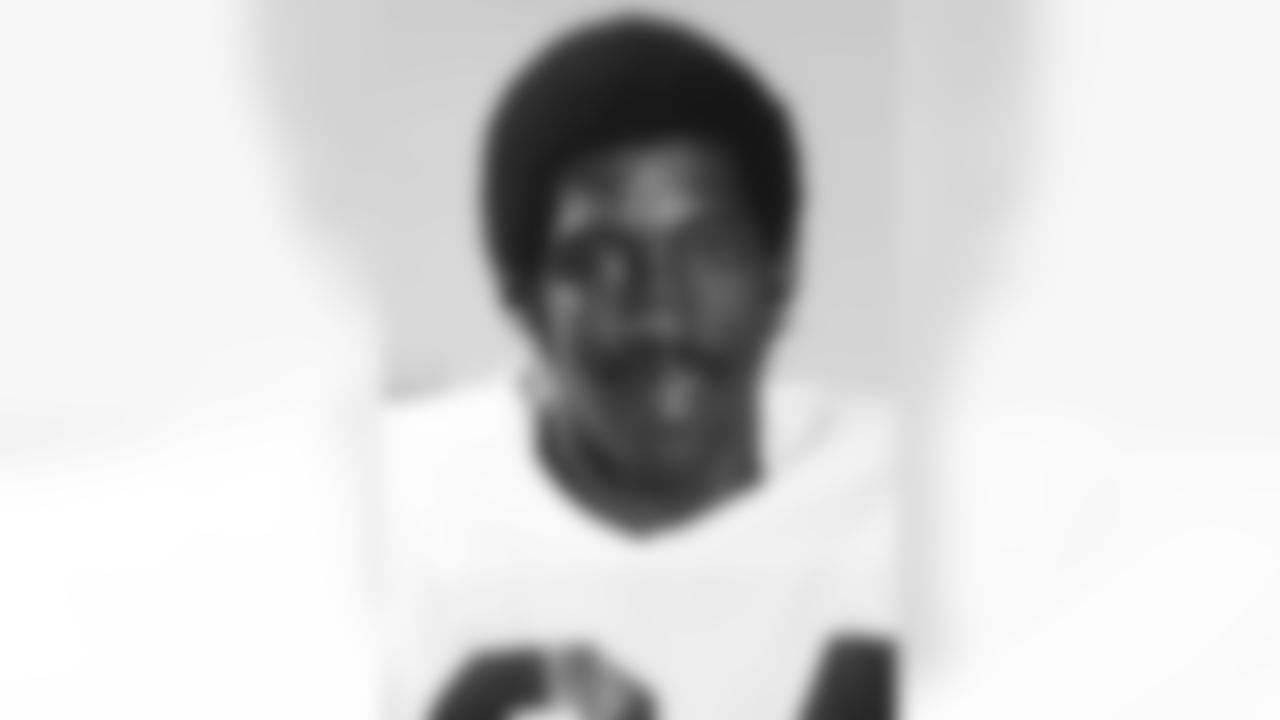The trademark display of Jack Patera's anger or displeasure would start slowly, as the flush of fury worked its way from the bottom of his thick neck and up his cheeks before his entire face was red.
Unfortunately, this is the image of the Seahawks' first coach that is cemented in the memory of the franchise's first fans and even his friends and former players. His gruff exterior, however, could just as quickly morph into an engaging smile that lit up not only that too-often furious facade but even the darkest of winter days in the Pacific Northwest.
From the Seahawks' inaugural season in 1976 until the NFL Players' strike in 1982, Patera was the innovative coach who guided the franchise from its infancy to formidability and ultimately frustration.
"I really liked playing for Jack, and I really like Jack," said Sherman Smith, the Seahawks' leading rusher from 1976-79 who now coaches the team's running backs. "When I think about the things that really made me like him and respect him, I thought he was fun, fair and he was always consistent.
"And the thing that I really liked about him was you knew where you stood with him. He was always honest about where you stood and how you were doing. And I appreciated that. I like Jack and I loved playing for him. I have nothing but positive memories about the time we were together."
The Seahawks will pay tribute to the Patera Era on Sunday during their regular-season opener against the Miami Dolphins at CenturyLink Field. The franchise's first coach, three of his former assistants, three members of the original football staff and 60 players from those Patera-coached teams will be honored during a halftime ceremony — including Hall of Fame wide receiver Steve Largent and fellow Ring of Honor members Jim Zorn, Jacob Green and Dave Krieg.
I got an introduction to the two faces of Patera during 1979, when I was a rookie beat writer covering the Seahawks for the now-defunct Fournier Newspapers in Kent.
Patera would hold his weekly day-after-the-game interview sessions with the beat writers in his office at the team's original headquarters along the shores on Lake Washington in Kirkland. No TV cameras. No sports-talk radio stations, because there weren't any at that time. Just the beat guys — Gil Lyons of the Seattle Times, Don Fair of the Seattle Post-Intelligencer, Earl Luebker of the Tacoma News Tribune, Will Nessly of the Everett Herald, Glenn Drosendahl of the Bellevue Journal-American and "the kid from Kent."
Patera came to the Seahawks from the Minnesota Vikings, where he had been the defensive line coach on Bud Grant's staff. That also meant he was a diehard 4-3 man, and definitely had no need for the 3-4 front that was becoming popular (the Seahawks would switch to the 3-4 in 1983 when Chuck Knox was hired to replace Patera).
I was unaware of Patera's passion for the 4-3 and just-as-fervent displeasure with the 3-4. Before one of my first Monday sessions in Patera's office, Lyons and Fair suggested that I ask Patera if he was considering shifting to the trendy 3-4.
"What nice guys," I thought. "They're willing to help out the new guy."
But when I asked Patera about a possible switch, he shifted his 300-plus pound body in his chair and pursed his lips as the blood began to rush from his neck up his face. Before the emotional eruption that Lyons and Fair were expecting could occur, Patera noticed them trying to hide smiles and laughs behind their notebooks.
Aware that the prank was on, Patera settled back in his chair, cracked one of those luminous smiles and offered an illuminating explanation of why he would only play with a four-man line.
So much for my baptismal into the many faces, and facets, that comprised Jack Patera. I knew of him during his first three seasons as the Seahawks' coach, but never really got to know him in the three-plus seasons that followed.
Born in Bismarck, N.D., on Aug. 1, 1933, Patera graduated from Washington High School in Portland before playing at the University of Oregon — and playing well enough to be selected All-Pacific Coast Conference as a senior in 1954 and be drafted in the fourth round of the NFL Draft by the Baltimore Colts in 1955.
After three seasons with the Colts, Patera was traded to the Chicago Cardinals (1958-59) and then selected in the 1960 expansion draft by the Dallas Cowboys. But his career all-but-ended when he injured a knee in the ninth game of that season.
Then, it was on to coaching the defensive lines for the Los Angeles Rams (1963-67), New York Giants (1968) and Vikings (1969-75) before being hired by the expansion Seahawks — in large part because of a recommendation by eventual NFL Commissioner Pete Rozelle.
"He made a strong pitch that we should hire Jack," John Nordstrom said this week while watching the current Seahawks prepare for Sunday's opener. "We interviewed a bunch of guys. The Rozelle recommendation played into our decision."
Photos from the Seahawks' Jack Patera era, from the year 1976 through 1982.




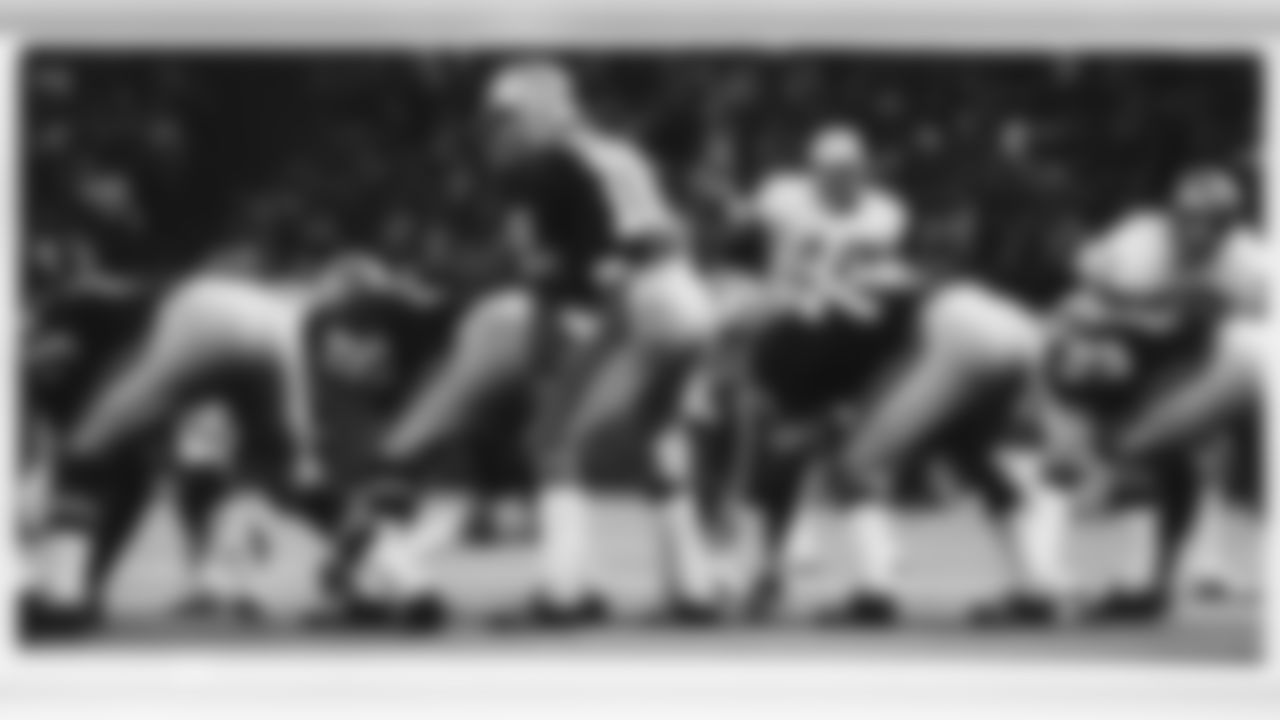



































After struggling through a 2-12 season in 1976, the Seahawks improved to 5-9 in 1977 before putting together back-to-back 9-7 seasons — the first in 1978 earning Patera the nod as NFL Coach of the Year. But the Seahawks dipped to 4-12 in 1980, 6-10 in 1981 and started the 1982 season 0-2 before the players' strike.
Nordstrom, then managing general partner of the Seahawks, was the one who fired Patera and John Thompson, the general manager who had been hired in 1975.
"I just felt our team chemistry was really going south," Nordstrom said. "I got along great with Jack and I didn't like having to part ways with him. It was unpleasant at the time, but it did work out well. I just felt it was something we had to do."
While the Seahawks moved on to first Mike McCormack, on an interim basis to end the 1982 season, and then Knox, Patera moved on with his life. He never coached again and lives in Cle Elum.
"I've had a lot of time to reflect," Patera told the Seattle Times last year. "And I'm content."
Patera could be a difficult man to deal with, and a tough coach to play for. He was as old school as they come, in part because that's how he learned to play and coach the game from people like Grant, Tom Landry and Don Shula.
But his former players — the Seahawks' original players — remember the good qualities he lived by and instilled in them.
"Jack reminded me of my father," Smith said. "My father had a gruff exterior, but he had a sense of humor, he was easy going. I thought it was the same way with Jack. People perceived him as this gruff guy and you couldn't possibly talk to him. But you go up and talk to him, he's funny and there more behind that gruff exterior than anyone would think.
"And that laugh Jack has, I thought he was cool. I didn't mind his rules and what he was trying to do because I thought discipline would help make us better."
Steve Raible, a wide receiver from 1976-81 and now "voice of the Seahawks" for radio broadcasts of the team's games, seconds that notion.
"The thing that was memorable for me, Jack was that guy who above all else was like, 'I'm going to protect my players,'" Raible said. "Sometimes that meant, 'I'm going to keep them from being their own worst enemy.' But he also made places that were off limits to everybody else. Like the locker room. Nobody goes in the locker room but the players."
Under Patera, that meant nobody. Rarely a coach. Never a reporter.
"I always appreciated things like that," Raible said. "The little things that made a big difference."
Little things, like Patera sitting in the rear of the plane on flights to road games so the veterans could sit in first-class.
"That was his way of saying, 'The players, the veterans, they're the ones who matter,'" Raible said.
Smith was an option quarterback in college and drafted as a wide receiver by the Seahawks, but ended up rushing for 3,429 yards and scoring 38 touchdowns. He was just one of the melting-pot members of that expansion team that Patera was able to mold into a winning team.
"It was tough for Jack (coaching an expansion team), and he did a great job of handling it because he had to deal with all those different personalities," Smith said. "He was trying to develop a culture even back in 1976 of how he wanted us to be, and when you bring all these different personalities that were used to doing it their own way he had to deal with that too.
"We didn't want to just be an expansion team, we wanted us to be respectable. So he wanted us to play at a high level."
Those early Seahawks found that elusive respectability, and then some — especially before the final three Patera teams combined to win just 10 games. Patera would try anything, and often did, if it would help his team win.
"I figured to win more ballgames we'd simply have to gamble more often," Patera once said. "I would much rather have beaten teams on muscle and execution, but we just didn't have the talent."
But he and Thompson did a good job of acquiring talent — most noticeably Largent on offense; but also Green, safeties Kenny Easley and John Harris, cornerback Dave Brown and linemen Jeff Bryant and Joe Nash on defense. It was those players who formed the cornerstone for the teams that Knox would lead to four playoff berths from 1983-88.
"Jack and John set a pretty good starting place for this franchise," Raible said.
Added Smith, "Jack definitely had an eye for talent."
And Sunday, all eyes will be on Jack Patera as the franchise honors its original coach and the era he ushered in.
Over 60 former Seahawks players, coaches and front office staff will be in Seattle this weekend to celebrate the first head coach in Seahawks history: Jack Patera.






